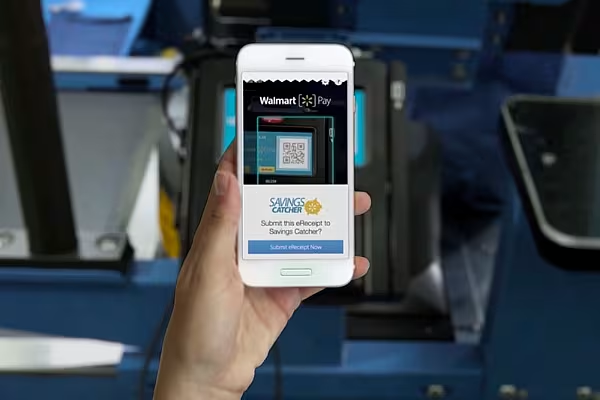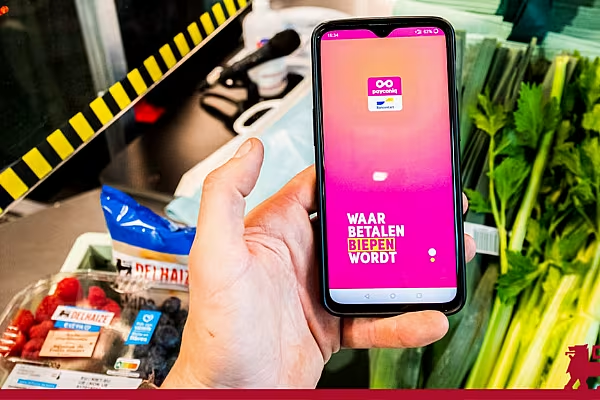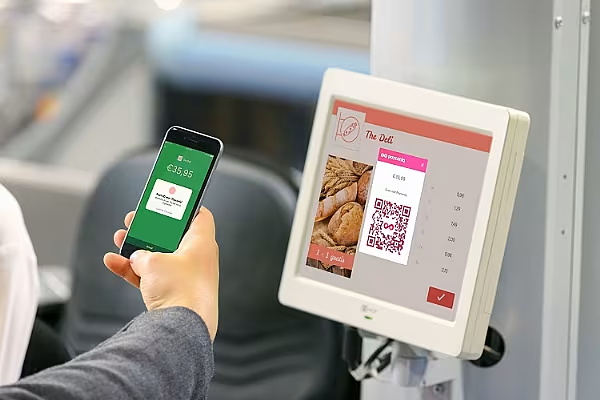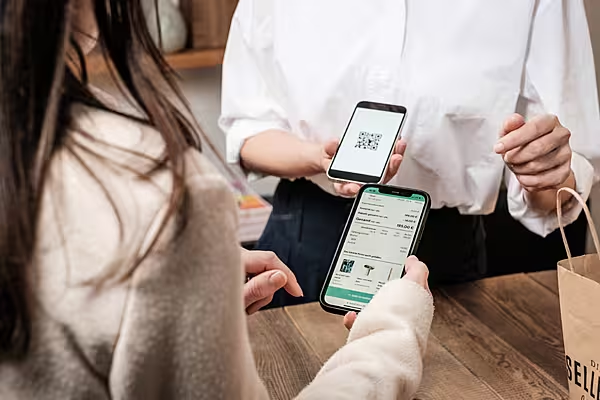Walmart Stores’s app is close to surpassing Apple Pay in usage for mobile payments in the US, giving the world’s largest retailer even more clout as a growing number of people shop with their smartphones.
Available in 4,774 stores, Walmart Pay is enrolling tens of thousands of new users a day, up from thousands four or five months ago, said Daniel Eckert, who runs the business.
Two-thirds of the customers who try it also use it a second time within 21 days, he said, giving him confidence Walmart Pay will surpass Apple Pay in the US in terms of use by shoppers in stores where they’re accepted.
“If daily enrollments don’t slow down, I think that’s pretty well in the cards shortly,” said Eckert, senior vice president for services and digital acceleration. “I would have to imagine we are getting pretty close.”
Richard Crone, chief executive officer of researcher Crone Consulting, estimates Walmart will pass Apple Pay in active US users - those making at least two transactions a month - by the end of 2018.
Walmart is the biggest retailer rejecting Apple Pay, which requires merchants to have the right hardware at checkout. Since it rolled out in 2014, Apple has attracted retailers including Best Buy, Macy’s and Walgreens Boots Alliance. Apple doesn’t track individual consumers’ transactions, which makes some merchants reluctant to use it.
Service Launch
Walmart Pay was unveiled in December 2015, more than a year after Apple’s service debuted. The Bentonville, Arkansas-based retailer resisted the lure of Apple in favour of its own offering - and it’s paid off.
Months after Walmart Pay’s debut, the retailer held discussions with Apple about incorporating Apple Pay into the app, according to people familiar with the matter.
The talks continued until March of 2016, ending without a deal due to the difficulty of blending the technology underpinning each company’s approach, said one of the people, who asked not to be identified as the discussions were private.
“As the world’s largest retailer, you can imagine that we have conversations with a variety of companies about products and services that we think would be of interest to our customers, and Apple, as big of a company as they are, is one of those companies,” Walmart said. Apple declined to comment.
Slow Developing
Both companies are pursuing a $49 billion market for mobile payments that’s been slow to develop in the US. Many consumers still worry about mobile payments’ security, and find that using a plastic card is often as fast and easy as pulling out their phone to pay.
Like many retailers, Walmart still doesn’t accept the wireless payment technology built in to mobile phones, stymieing Apple’s efforts. Instead, Walmart Pay scans a code on the phone to complete a transaction.
Walmart, in control of its own destiny and stores, has been able to train its associates and customers to use Walmart Pay. It’s promoted the service consistently in stores and online.
Unlike Apple Pay, which only works with Apple’s devices, Walmart Pay works with both iOS and Android phones - a feature that hastened adoption.
“They flawlessly deployed the system, and it works,” Crone said. Walmart Pay also incorporates in-store offers, promotions, rewards and gift-card balances all in one place, making it convenient for users, he said.
‘Quicker Changes’
Walmart began narrowing Apple’s lead earlier this year. Some 5.1% of Walmart shoppers said they used Walmart Pay in June, compared with 5.5% of iPhone users at stores that accept Apple Pay, which launched more than a year earlier, according to a survey by Pymnts.com and InfoScout. Walmart Pay’s rate of adoption is higher than Samsung Pay and Android Pay combined, the survey found.
“Apple Pay’s road is much more difficult than Walmart’s is,” Brendan Miller, an analyst at Forrester Research, said in a phone interview. “It means that Walmart can make quicker changes, they can move faster in many respects than Apple Pay.”
Forrester’s survey of 58,000 online consumers in the first half of 2017 found that 7% of them used Apple Pay in the past three months, while 6% used Walmart Pay.
Many other retailers, such as Kohl’s and CVS, have launched their own mobile wallets as well - yet none has had Walmart’s traction, said James Wester, an analyst at IDC. While consumers have found Walmart’s app useful, for some others, a “wallet is not a natural fit,” he said in a phone interview.
Walmart is more interested in competing with Amazon than Apple. Earlier this year, Amazon acquired Whole Foods to hasten its expansion into the grocery market, and last year it debuted Amazon Go, an employee store in Seattle where no checkout is required. All purchases are automatically tracked with an app - likely a preview of Amazon’s stores of the future.
Apple has helped other retailers prepare to more effectively compete with Amazon. In October, Apple said that retailers like Safeway will be rolling out its mobile-payment service. Starbucks, which has deployed the first successful retail mobile-payment app, uses Apple Pay as well.
Over the past year, active users have more than doubled, and annual transactions are up 330%, Apple executives said during November 2 earnings call.
Walmart, for its part, has a “roadmap that continues as long as my arm,” Eckert said.
News by Bloomberg, edited by ESM. Click subscribe to sign up to ESM: The European Supermarket Magazine.














